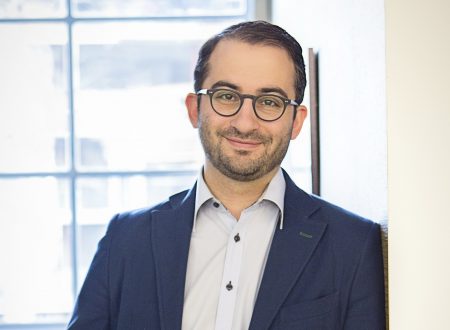While politicians often talk about how important it is to be “tough on crime”, that talk ignores the fact that over 60% of inmates in Ontario’s provincial prisons (the national average is 57%) are not serving a sentence and have not been found guilty of the crime that brought them to jail.
Rather, they are on “pre-trial detention”. Despite the Charter of Rights and Freedoms (s. 11(d)) guaranteeing everyone the right “to be presumed innocent until proven guilty”, the majority of people in Canadian prisons are not actually being punished for anything.
This problem particularly impacts Indigenous peoples in Ontario. Although Indigenous people make up only about 2% of Ontario’s population, 13% of the people in Ontario prisons are Indigenous. The systemic racism in the criminal justice system that leads to that overrepresentation is in many cases the fault of policies which may seem neutral, but disproportionately impact Indigenous people. Bail policies are a perfect example of this phenomenon.
The new policy
On October 30, 2017, Ontario Attorney General Yasir Naqvi announced that it was providing new guidance to its Crown Prosecutors about how they should apply the rules around bail. It is important to know that the rules themselves aren’t changing, (they are set by the Criminal Code and the Supreme Court), but the way those rules are going to be applied in Ontario is changing significantly.
Some of the key changes are:
- “The Prosecutor should consider the least restrictive form of release…”
- The Prosecutor “should not request a release with a surety… unless each lesser form of release has been considered and rejected as inappropriate”
- When charged with an “administration of justice” offence (breaching a court order), “the decision to cancel the previous release order should not be automatic”, but should take into account all of the normal considerations when granting bail.
The new directive also sets out clearly what factors the prosecutors should consider when deciding what type of release to seek.
- “The Prosecutor should consider whether there is a reasonable prospect of conviction and whether it is in the public interest to proceed with the prosecution of the charges. If the charge screening threshold is not met the charge should be withdrawn and the accused released.”
- If the accused would not likely be sentenced to jail time if they were eventually convicted, “detention should be rare….”
- The unique circumstances of Indigenous Peoples is also an important consideration.
- “…seeking the detention of an Indigenous accused should remain an exceptional measure unless the release of the accused would jeopardize the safety and security of the victim or the public.”
Finally, the Directive instructs prosecutors to only ask for conditions on bail that “are necessary and appropriate to the circumstances of the accused and the alleged offence.” In other words, the connection between the condition and the offence have to be clear and direct. Perhaps most significant is the rule that: “Conditions of release shall not be imposed to change an accused’s behaviour or to punish an accused person.” Often, prosecutors seek “abstain” provisions – rules preventing the accused from possessing or drinking alcohol, or conditions not allowing accused person to be in contact with certain people who might be seen as ‘bad influences’. These types of provisions turn otherwise lawful conduct into crimes, further victimizing people who are still not guilty of any offence.
What does it mean?
The rules which are now going to be applied are not actually new rules – the Supreme Court has repeatedly said (most recently in R v Antic 2017 SCC 27) that “… an unconditional release on an undertaking is the default position when granting release.” The starting point when releasing a person who has been arrested, but not found guilty, is their unconditional release, on an undertaking (such as a Promise to Appear in court).
Similarly, the idea that the conditions on a release should be minimal, is not new. What is new however, is the likelihood that prosecutors will start properly applying those rules. Once these rules are implemented, people awaiting trial should spend less time in prison and when they’re out in the community, they will have fewer restrictive conditions. Prosecutors will continue to consider community safety when proposing conditions, but that will now be one of many considerations, rather than the overriding consideration.
Criminal defence lawyers working with Indigenous people, especially in more remote areas of Ontario, should be particularly attentive to the conditions being proposed or agreed to by prosecutors. Prosecutors should be made to justify the proposed form of release using the ‘ladder principle’, and explain how proposed conditions are “necessary and appropriate”.
When fully applied, these rules should mean fewer accused persons losing their jobs and homes despite being legally innocent.
While the new Directive is not a perfect solution, it is a big step towards a culture shift in the justice system, away from overincarceration, and towards understanding and rehabilitation.
Related Posts

Racial profiling in Ontario is "widespread" and "particularly damaging" according to new Human Rights Commission report
On May 3rd, the Ontario Human Rights Commission released its report on Racial Profiling in Ontario. A year in the making, this report is the first time in nearly…
Read More...
Kebaowek First Nation v Canadian Nuclear Laboratories: Opportunities and Challenges as the Federal Court helps UNDRIP take shape in Canadian law
Monday, March 24, 2025
On February 19, 2025, the Federal Court released its decision in Kebaowek First Nation v Canadian Nuclear Laboratories, 2025 FC 319. This decision is an…
Read More...
OKT Podcast - Overview of Quebec (Attorney General) v Pekuakamiulnuatsh Takuhikan, 2024 SCC 39
Thursday, December 19, 2024
In this episode, OKT lawyers, Eileen Church Carson, Tomáš Jirousek, Senwung Luk and Corey Shefman provide insights on Quebec (Attorney General) v Pekuakamiulnuatsh Takuhikan, 2024 SCC…
Read More...

